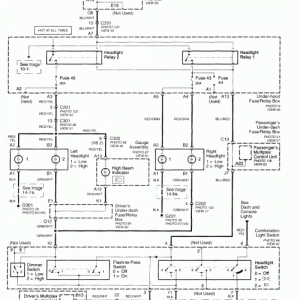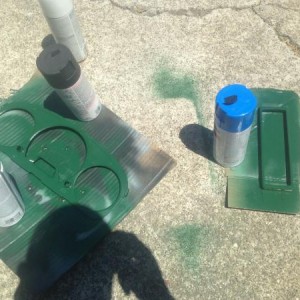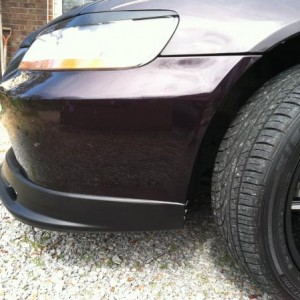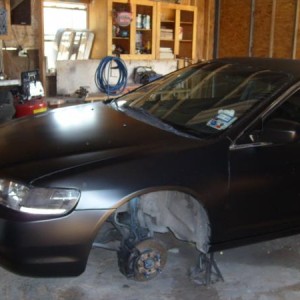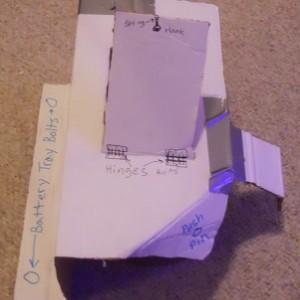Here is some good info from the DD website. Enjoy!
WHY GO PORTED?
Efficiency is the easiest one word reason for choosing ported over a sealed box. Everything is better with a little efficiency sprinkled on it. Ask any motor builder what they would do to a motor if it were theirs and they'd say turbo charge it! What does turbo charging do for an engine? It raises the efficiency. Why not apply this same thing to your audio system. Making the most out of the air space you have for a subwoofer enclosure, is the first step in raising the efficiency of your system. This means that you will utilize this space in the most efficient manner possible.
Designing a ported a.k.a. vented enclosure will not only give you added output, but can give you more low-frequency extension. This means louder and lower! Since the speaker system is the least efficient part of the whole audio chain, would it not make sense to make it as efficient as possible? Of coarse it does.
MORE SOUND, BETTER BASS
This is why venting is basically free output, and free sound quality. Local shops tell you that a small sealed box is the best way to go? Hit up your local hi-end home audio store and find out how many of those $20,000.00 pairs of speakers are sealed designs. You won't find many. Think efficiency as you read up in the DD tutorial section, this will help you clear all of that smoke out of your eyes that most car audio manufacturers have been pumping all along.
HOW DOES A PORT WORK
Think of a box port not as a vent in the terms of a venting path for air to travel into and out of a box, but rather as extra cone area that is propagating acoustic energy from the enclosure to the cabin. The air in a port is fixed; it is trapped within the confines of the port walls. When the cone moves there is a corresponding change to the pressure in the box, that pressure change then causes the trapped air in the port to move either forward or backward. It moves as a solid unit, just like a speaker cone does. When you build a properly vented enclosure, its kind of like a two for one special! Since the port is essentially another woofer!
MORE RADIATING AREA
A passive radiator and a vented port work on the same theory. When a port mass moves back and forth, a pressure wave (sound wave) is sent into the cabin. The larger the port, the larger the radiating area is that creates the pressure. Tuning a port is tuning the mass of the trapped air in the port to the air mass in the box volume.
For all out no holds barred SPL efficiency, rule of thumb is the larger the box, the higher the output. The larger the box, the larger the ports can be for a given frequency tuning range. There is no substitute for cubic inches. Drivers like our 9500 series can achieve high efficiency in moderate sized vented enclosures (3 to 4 cubic feet) but will continue to increase in output with increase in volume and port size. Multiple drivers in such enclosures can yield a frightening amount of output and should be used with caution.
THE RIGHT PORT AREA, THE DD PORT
Most modeling programs that simulate box responses were written for home audio use. They are not suited for high output systems. The port area defaults are inadequate. The port area must be commensurate with cone area. If the port velocity gets too high, the port no longer functions as a port, you end up with a leaky sealed box, double bad.
Lets say we have a 12 inch speaker in a box, roughly 100 sqin of surface area. Many programs and manufacturer sites will suggest a 4" diameter port for a 12" vented box. A 4" diameter port has about 12 sqin of area. This is about an 8-1 ratio of cone area to port area. If the 12 inch cone moves 0.25", the port must move 2.0". It can handle this, but when the cone is moving 1.0", the port must move 8 inches! Now you've got a leaky sealed box.
You need more port area for a clean sounding, high output system. The DD port formula is this: 16 sqin of port area per cubic foot of box volume. The port should be 16 inches long. Remember, the port is tuned to the box volume, not the sub(s).
This formula was derived from 1000s of hours of in-car testing and 1000s of installs. It works. It takes into account the need for increasing port area for increasing cone area. When combined with our DD subwoofer box requirements, you'll end up with the perfect match.
VARIABLE PORT TUNING
The DD design philosophy of low moving mass, well controlled suspension and strong, linear magnetic systems allow the user many design applications never realized with traditional speakers. The growing popularity of the SPL competitions has led to new engineering requirements for an audio system. DD subs are ideally suited for both all out SPL vehicles and daily driver vehicles where high SPL and good sounds are required. The problem lies in the fact that the frequencies where a vehicles peak SPL may occur rarely ever coincide with a tuning frequency that promotes utmost sound quality. The peak SPL frequency is usually somewhat higher that the tuning frequency for sound quality.
The use of a larger than normal port will allow the user to find the cars peak frequency for greatest SPL. Reducing the port opening will lower the box tuning frequency and provide loading to the woofer over a wider bandwidth. This will improve the transient response and impact of the system. The higher tuning frequency redirects the woofers radiating energy into a narrow band which when tuned to coincide with the vehicles peaks can yield dramatic SPL numbers. The focus of attention here should be to tune the system to each application. Although the general box recommendation will yield very satisfying results, competing at the highest levels of SPL or SQ contests, or simply yielding the best possible results are directly related to methodical tuning.





 DB for the car...do a 12" HW for the garage or basement. we'll see.
DB for the car...do a 12" HW for the garage or basement. we'll see. over ported at 41 hz... or at least thats what winISD tells me. I like LOUDLOUDLOUD and sealed just cant do it for me, and ported can sound nearly as good, so for the rest of my life my setups will never be sealed
over ported at 41 hz... or at least thats what winISD tells me. I like LOUDLOUDLOUD and sealed just cant do it for me, and ported can sound nearly as good, so for the rest of my life my setups will never be sealed 